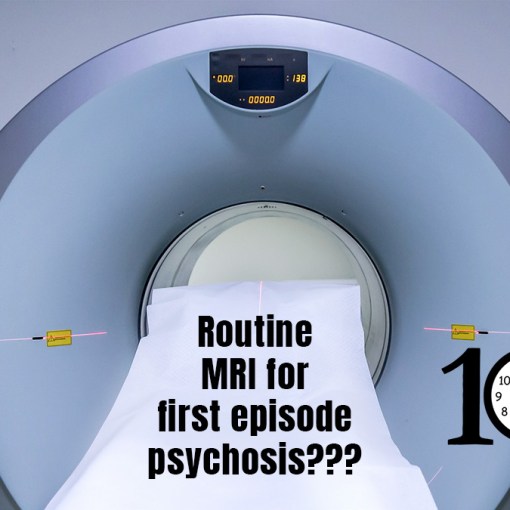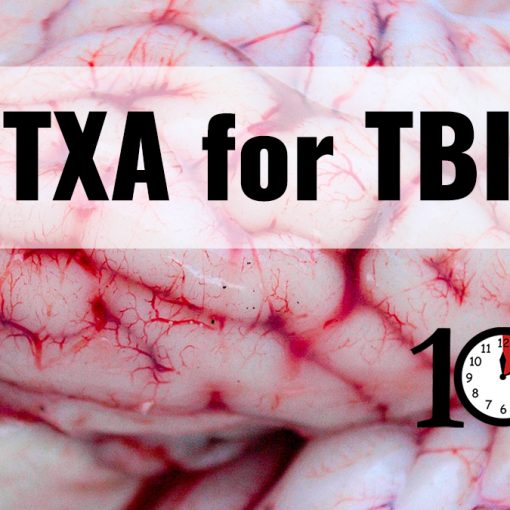Case
“Doctor to resus 2, stat”, and you just stepped into the department. There hasn’t even been time for a sip of coffee or a washroom break after the commute in. In the resus room, you are greeted with a hub of activity – nurses, paramedics, and medical students everywhere – surrounding a 50 something male, rather grey in colour, with a blood pressure of 63/37. What’s your approach to hypotension?
My approach to hypotension
If there is an obvious cause of the hypotension, such as trauma or a GI bleed, you don’t need this approach. Just start treatment as usual.
Control the airway and supply oxygen. Most times this will be with basic airways maneuvers or an LMA. You can always intubate later when you have the patient better resuscitated.
If intubation is necessary, be prepared for worsening hypotension. Open the fluids wide, preferably with a pressure bag. Either have a vasopressor drip up and ready or draw up push dose pressors. (My preference is epinephrine 1ml (100mcg) from the cardiac amp drawn into 9ml of NS, giving me 10ml of 10mcg/ml epinephrine.)
Is this primarily an arrhythmia?
- Cardiovert or pace
- One of the toughest calls in the ED is whether rapid a.fib. is the cause of or the result of hypotension. Nothing is perfect, but in general if the rate is 170 or more, I blame the a.fib. and cardiovert. If it is 150 or less, I look for other causes.
If there is not an arrhythmia, everyone gets a trial of IV fluids, with frequent reassessments for response. Nurses know that if 2 attempts at an IV are unsuccessful, I will place an IO (or 2).
Could this be anaphylaxis?
- I like to think about this early, because it is the one condition I know pressors (epinephrine) will actually help the patient
- Is there wheezing, hives, or a medic alert bracelet?
Is this cardiogenic shock from a STEMI?
- 12 lead ECG
- Start pressors and get the patient to the cath lab
Rapid, focused history (if possible) and physical focused on sign and symptoms of hypovolemia, hemorrhage, cardiac disease, trauma, sepsis, and obstructive shock.
The RUSH exam: HIMAP
- Heart (parasternal long and apical 4 chamber)
- 3 questions:
- Is there tamponade?
- Is there RV failure (possible PE)?
- Is the LV function good or bad?
- 3 questions:
- IVC
- Collapsing or not (rough estimate of volume status of patient)
- Morison’s pouch (and LUQ and pelvic views)
- Is there free fluid? (from a ruptured ectopic etc)
- Aorta
- Is a ruptured AAA the culprit?
- Pneumothorax
- Is there a pneumothorax (and therefore tension)?
At the end of the RUSH exam, you might have a definitive answer such as AAA, tension pneumothorax, or tamponade. If so, just start treatment.
If you don’t have a definitive answer, you should have some clues.
Heart is hyperdynamic, IVC is small and collapsing, fluids seem to be helping
- DDx: sepsis, hypovolemia, blood loss
- Treat with fluid resuscitation first. Either crystalloid or blood products depending on the scenario, guided by IVC and clinical exam
- If inadequate responses to fluid resuscitation, treat vascular tone (start pressors)
- In general, these patients will get a dose of empiric antibiotics
Heart is hypodynamic, IVC is large without collapse and fluids have not helped
- DDx: cardiogenic or obstructive
- Tamponade and pneumothorax already ruled out by RUSH exam
- Start ACS therapies and get to CT to assess for PE (if not clear on US)
- Start management of potential cardiogenic shock with pressors/inotropes
These steps should have got you through the first 10 minutes of resuscitation. Most patients will have fit into one of the broad categories above. You can now take a deep breath, and go back to do a thorough head to toe exam.
However, occasionally, despite this approach occasionally you will not yet know the cause, or the patient will not be responding to fluids and pressors in the way you would expect.
At this point I consider:
- Is this metabolic? Calcium, acidosis, adrenal insufficiency, thyroid disease?
- Is this toxicologic?
- Did I miss an accult bleed? GI, retroperitoneal?
- Reconsider anaphylaxis.
UPDATE July 2017: REBEL EM added an excellent post on what to consider in the hypotensive patient who isn’t responding to vasopressors, which goes into this final step in a lot more detail. This image is stolen (hopefully with permission) from that post:

Notes

Image used with permission from Scott Weingart, EMCrit.org
Obviously, this is a simplified approach to hypotension. Often, shock will have multiple etiologies, such as sepsis complicated by cardiac depression. However, these steps help me ensure I cover the major causes in the first 10 minutes.
Other FOAMed Resources
The hypotensive ED patient: a sequential systematic approach on emDocs
RUSH exam from CastleFest 2013
Dawson, Mallin. Introduction to Bedside Ultrasound, Volume 2. 2013. Apple iBook.
RUSH by Mount Sinai Emergency Medicine Ultrasound
RUSH protocol: Rapid Ultrasound for Shock and Hypotension on ALiEM
Ultrasound leadership academy: Assessing LV function and the RUSH exam for shock by EM Curious
Critical Care Fundamentals: Management of Shock Part 1 on REBELEM:
References
Otero RM et al. Chapter 25. Approach to the Patient in Shock. In: Tintinalli JE et al. eds. Tintinalli’s Emergency Medicine: A Comprehensive Study Guide, 7e. New York, NY: McGraw-Hill; 2011. http://accessmedicine.mhmedical.com/content.aspx?bookid=348&Sectionid=40381486.
Jones A and Kline J. Chapter 6. Shock. In: Marx JA et al. eds. Rosen’s Emergency Medicine, 8e. Philadelphia: Elsevier Saunders; 2014.
Dawson, Mallin. Introduction to Bedside Ultrasound, Volume 2. 2013. Apple iBook.
Seif D et al. Bedside ultrasound in resuscitation and the rapid ultrasound in shock protocol. Crit Care Res Pract. 2012;2012:503254. PMID: 23133747
Morgenstern, J. An approach to undifferentiated hypotension, First10EM, April 8, 2015. Available at:
https://doi.org/10.51684/FIRS.275






3 thoughts on “An approach to undifferentiated hypotension”
It’s nice case & Explanation, thank you